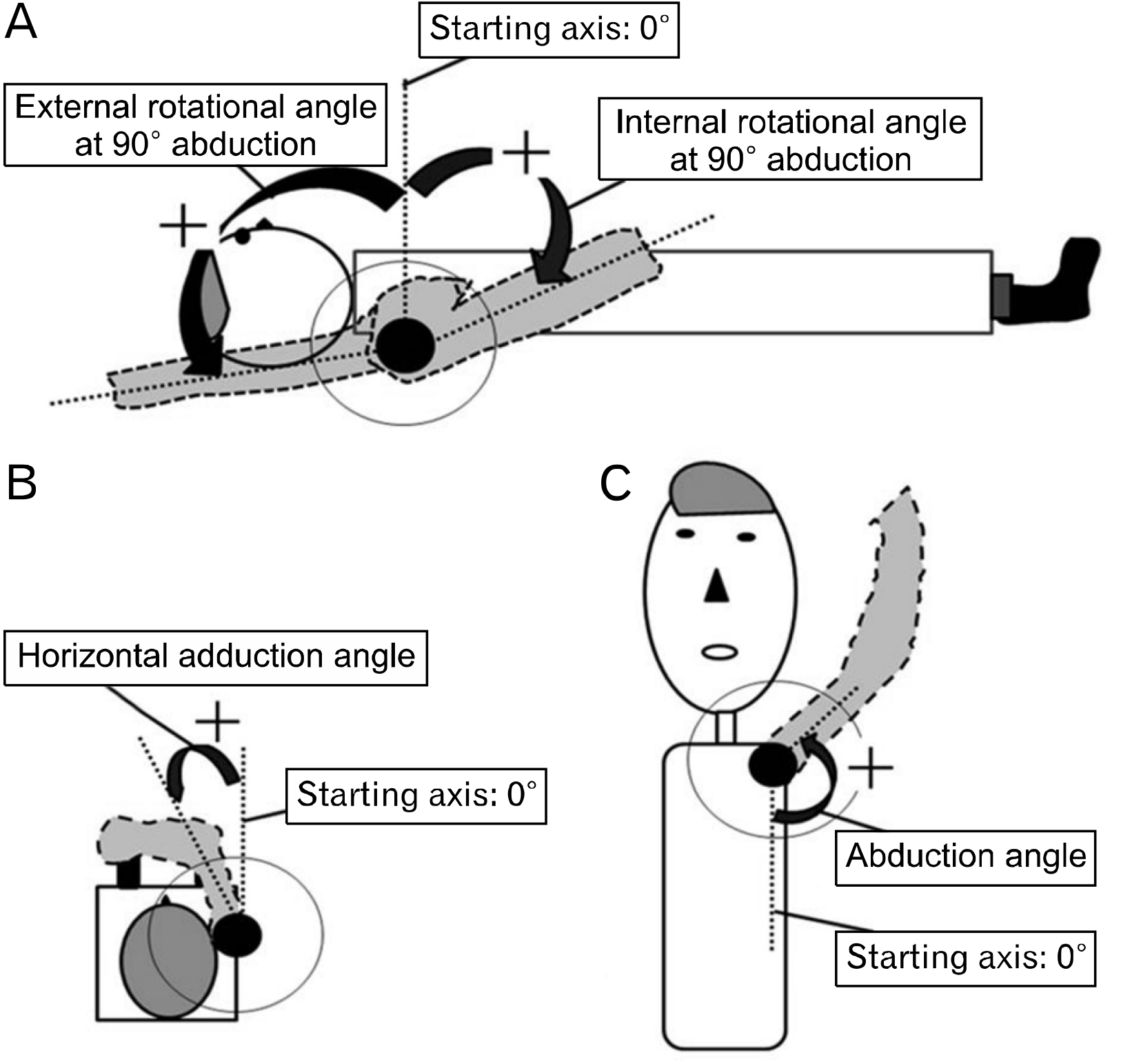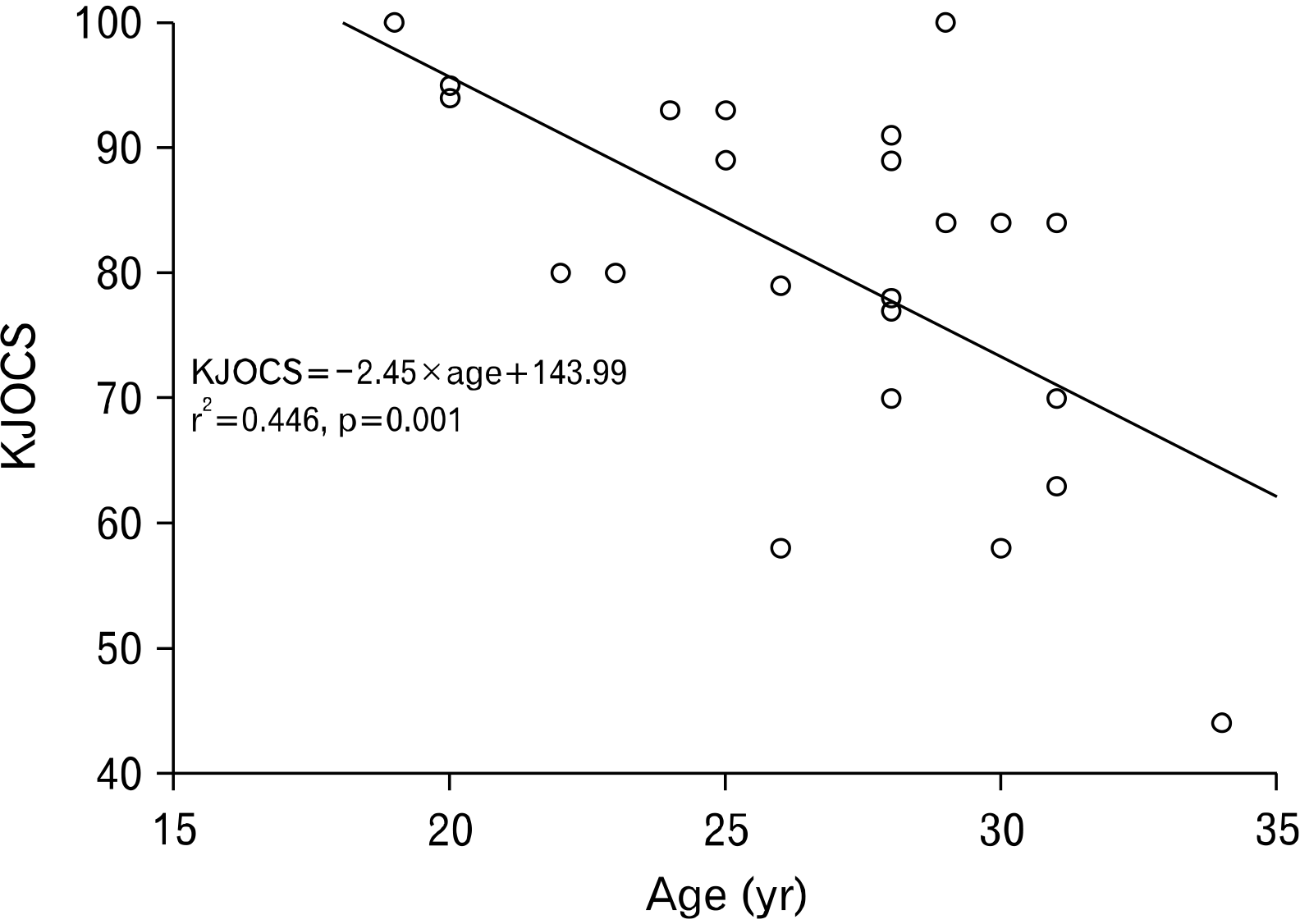1. Chambless KM, Knudtson J, Eck JC, Covington LA. 2000; Rate of injury in minor league baseball by level of play. Am J Orthop (Belle Mead NJ). 29:869–72.
2. Fleisig GS, Andrews JR, Dillman CJ, Escamilla RF. 1995; Kinetics of baseball pitching with implications about injury mechanisms. Am J Sports Med. 23:233–9. DOI:
10.1177/036354659502300218. PMID:
7778711.

3. Myers JB, Laudner KG, Pasquale MR, Bradley JP, Lephart SM. 2006; Glenohumeral range of motion deficits and posterior shoulder tightness in throwers with pathologic internal impingement. Am J Sports Med. 34:385–91. DOI:
10.1177/0363546505281804. PMID:
16303877.

4. Crockett HC, Gross LB, Wilk KE, et al. 2002; Osseous adaptation and range of motion at the glenohumeral joint in professional baseball pitchers. Am J Sports Med. 30:20–6. DOI:
10.1177/03635465020300011701. PMID:
11798991.
5. Dines JS, Frank JB, Akerman M, Yocum LA. 2009; Glenohumeral internal rotation deficits in baseball players with ulnar collateral ligament insufficiency. Am J Sports Med. 37:566–70. DOI:
10.1177/0363546508326712. PMID:
19059890.

6. Hurd WJ, Kaplan KM, ElAttrache NS, Jobe FW, Morrey BF, Kaufman KR. 2011; A profile of glenohumeral internal and external rotation motion in the uninjured high school baseball pitcher, part II: strength. J Athl Train. 46:289–95. DOI:
10.4085/1062-6050-46.3.289. PMID:
21669099. PMCID:
PMC3419558.

7. Camp CL, Zajac JM, Pearson DB, et al. 2017; Decreased shoulder external rotation and flexion are greater predictors of injury than internal rotation deficits: analysis of 132 Pitcher-Seasons in professional baseball. Arthroscopy. 33:1629–36. DOI:
10.1016/j.arthro.2017.03.025. PMID:
28865566.

8. Bailey LB, Shanley E, Hawkins R, et al. 2015; Mechanisms of shoulder range of motion deficits in asymptomatic baseball players. Am J Sports Med. 43:2783–93. DOI:
10.1177/0363546515602446. PMID:
26403207.

9. Posner M, Cameron KL, Wolf JM, Belmont PJ Jr, Owens BD. 2011; Epidemiology of major league baseball injuries. Am J Sports Med. 39:1676–80. DOI:
10.1177/0363546511411700. PMID:
21709023.

10. Douoguih WA, Dolce DL, Lincoln AE. 2015; Early cocking phase mechanics and upper extremity surgery risk in starting professional baseball pitchers. Orthop J Sports Med. 3:232596 7115581594.DOI:
10.1177/2325967115581594. PMID:
26665056. PMCID:
PMC4622343.

11. Wilk KE, Macrina LC, Fleisig GS, et al. 2015; Deficits in glenohumeral passive range of motion increase risk of shoulder injury in professional baseball pitchers: a prospective study. Am J Sports Med. 43:2379–85. DOI:
10.1177/0363546515594380. PMID:
26272516.

12. Alberta FG, ElAttrache NS, Bissell S, et al. 2010; The development and validation of a functional assessment tool for the upper extremity in the overhead athlete. Am J Sports Med. 38:903–11. DOI:
10.1177/0363546509355642. PMID:
20335509.
13. Amin NH, Ryan J, Fening SD, Soloff L, Schickendantz MS, Jones M. 2015; The relationship between glenohumeral internal rotational deficits, total range of motion, and shoulder strength in professional baseball pitchers. J Am Acad Orthop Surg. 23:789–96. DOI:
10.5435/JAAOS-D-15-00292. PMID:
26609146.

14. Koran LM. 1975; The reliability of clinical methods, data and judgments (first of two parts). N Engl J Med. 293:642–6. DOI:
10.1056/NEJM197509252931307. PMID:
1097917.

16. Franz JO, McCulloch PC, Kneip CJ, Noble PC, Lintner DM. 2013; The utility of the KJOC score in professional baseball in the United States. Am J Sports Med. 41:2167–73. DOI:
10.1177/0363546513495177. PMID:
23851649.

17. Oh JH, Kim JY, Limpisvasti O, Lee TQ, Song SH, Kwon KB. 2017; Cross-cultural adaptation, validity and reliability of the Korean version of the Kerlan-Jobe Orthopedic Clinic shoulder and elbow score. JSES Open Access. 1:39–44. DOI:
10.1016/j.jses.2017.03.001. PMID:
30675538. PMCID:
PMC6340835.

18. Kraeutler MJ, Ciccotti MG, Dodson CC, Frederick RW, Cammarota B, Cohen SB. 2013; Kerlan-Jobe Orthopaedic Clinic overhead athlete scores in asymptomatic professional baseball pitchers. J Shoulder Elbow Surg. 22:329–32. DOI:
10.1016/j.jse.2012.02.010. PMID:
22608934.

19. Fronek J, Yang JG, Osbahr DC, et al. 2015; Shoulder functional performance status of Minor League professional baseball pitchers. J Shoulder Elbow Surg. 24:17–23. DOI:
10.1016/j.jse.2014.04.019. PMID:
25168348.

20. Shanley E, Kissenberth MJ, Thigpen CA, et al. 2015; Preseason shoulder range of motion screening as a predictor of injury among youth and adolescent baseball pitchers. J Shoulder Elbow Surg. 24:1005–13. DOI:
10.1016/j.jse.2015.03.012. PMID:
25957112.

21. Wilk KE, Reinold MM, Macrina LC, et al. 2009; Glenohumeral internal rotation measurements differ depending on stabilization techniques. Sports Health. 1:131–6. DOI:
10.1177/1941738108331201. PMID:
23015864. PMCID:
PMC3445072.
22. Laudner KG, Stanek JM, Meister K. 2006; Assessing posterior shoulder contracture: the reliability and validity of measuring glenohumeral joint horizontal adduction. J Athl Train. 41:375–80.
23. Myers JB, Oyama S, Goerger BM, Rucinski TJ, Blackburn JT, Creighton RA. 2009; Influence of humeral torsion on interpretation of posterior shoulder tightness measures in overhead athletes. Clin J Sport Med. 19:366–71. DOI:
10.1097/JSM.0b013e3181b544f6. PMID:
19741307.

24. Wilk KE, Meister K, Andrews JR. 2002; Current concepts in the rehabilitation of the overhead throwing athlete. Am J Sports Med. 30:136–51. DOI:
10.1177/03635465020300011201. PMID:
11799012.

25. Burkhart SS, Morgan CD, Kibler WB. 2003; The disabled throwing shoulder: spectrum of pathology. Part I: pathoanatomy and biomechanics. Arthroscopy. 19:404–20. DOI:
10.1053/jars.2003.50128. PMID:
12671624.

26. Kibler WB, Sciascia A, Thomas SJ. 2012; Glenohumeral internal rotation deficit: pathogenesis and response to acute throwing. Sports Med Arthrosc Rev. 20:34–8. DOI:
10.1097/JSA.0b013e318244853e. PMID:
22311291.
27. Kim SH, Park JS, Jeong WK, Shin SK. 2005; The Kim test: a novel test for posteroinferior labral lesion of the shoulder: a comparison to the jerk test. Am J Sports Med. 33:1188–92. DOI:
10.1177/0363546504272687. PMID:
16000664.
28. Uhl TL, Kibler WB, Gecewich B, Tripp BL. 2009; Evaluation of clinical assessment methods for scapular dyskinesis. Arthroscopy. 25:1240–8. DOI:
10.1016/j.arthro.2009.06.007. PMID:
19896045.

29. Gilliam BD, Douglas L, Fleisig GS, et al. 2018; Return to play and outcomes in baseball players after superior labral anterior-posterior repairs. Am J Sports Med. 46:109–15. DOI:
10.1177/0363546517728256. PMID:
28942657.





 PDF
PDF Citation
Citation Print
Print





 XML Download
XML Download